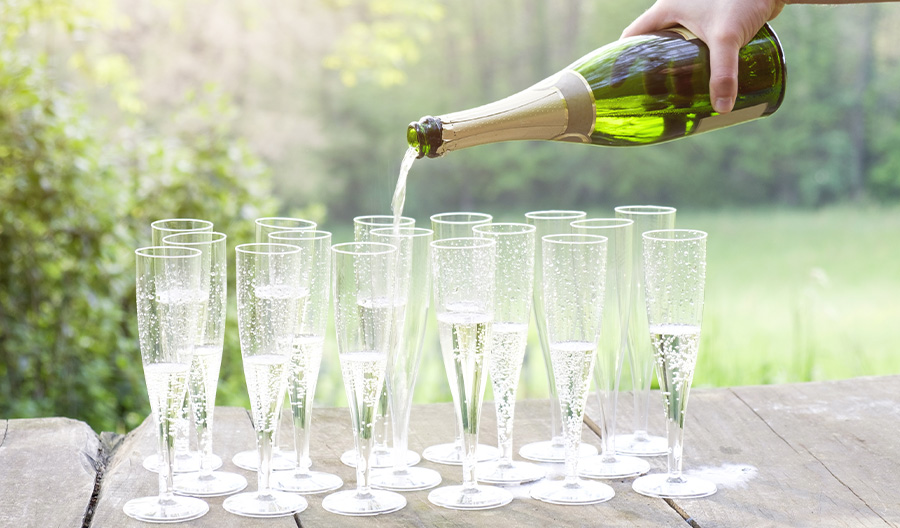In 2021, a Champagne producer made headlines when it decided to stop making its best-selling nonvintage, replacing it with a new multi-vintage cuvée. It’s the latest producer to announce such a change. While there are many multi-vintage offerings, are they different from their nonvintage counterparts?
The answer is a resounding “oui.”
What Is Nonvintage?
The wine industry has long used the term “nonvintage” (sometimes written as “NV”) to indicate wines made with grapes from several harvest years. This is a particularly important practice in Champagne, where wine reserves are kept to mitigate the effects of a bad growing season.
Traditionally blends were made to avoid the vintage’s effects like yield and quality Blends also help preserve the same taste year after year.
Nonvintage bottlings account for over 75% of Champagne shipped around the world, according to data provided by the Comité Champagne. Part of the allure of these wines is that since they’re made yearly, and in large quantities, they’re typically more abundant and less expensive than vintage Champagnes. They have a consistent style and familiar flavor profile, regardless of the release date.


The Nuance of Multi-Vintage
While all nonvintage Champagnes are technically “multi-vintage,” the producers opting to use that specific verbiage want to differentiate these bottlings from a typical house blend. Because the term “multi-vintage” isn’t one regulated by Appellation d’Origine Contrôlée (AOC) rules, how each housechooses to blend can vary greatly—they only have to abide by the same guidelines as they would if they labeled their wine as nonvintage.
The new multi-vintage process involves a base wine created from a “reserve perpetuelle,” much like the solera system used when making Sherry: A reserve of older vintages is kept in a vat that is replenished with wine from the current harvest. The base wine comes from the most recent harvest, supplemented by 20 to 30 percent reserve wines. The Grand Cuvée is centered on a specific harvest year, then meticulously blended with dozens of wines from ten or more different years.
While nonvintage wines strive for uniformity and consistency from year to year, multi-vintage wines manage to retain a more distinct style. They’re also meant to highlight the best attributes of a specificharvest and offer unique characteristics for each bottling—all traits that are usually only associated with vintage Champagnes.
Some processes include blending multi-vintage with a vintage philosophy more than a non-vintage philosophy.
Each blend—242, 243—has a distinctive character and singularity of its own. That gives areal identity to each wine, almost like a vintage.
A Stepping Stone to Vintage
Vintage Champagnes are only made in the most exceptional years, which is why they are highly coveted by wine collectors and connoisseurs, and often reserved for special occasions. For casual drinkers of sparkling wines, making a foray into vintage Champagnes can be quite a costly endeavor;the price of many bottles start at over a hundred dollars and, depending on the year and availability, can range well into the thousands.
But just because a Champagne is considered vintage doesn’t necessarily mean it’s a superior wine.
Even a qualitative vintage is not perfect, except for a very rare vintage like 2008. Multi-vintage, which are blends of the best vintages to get a high-quality cuvée, are often better than a single vintage.
Multi-vintage options aren’t necessarily inexpensive, but they are often more accessible than their single-vintage counterparts. They can also offer insight and education about vintage variations without losing the consistency of a house’s signature style. These blends are the perfect vehicle for exploration by combining the best of both vintage and nonvintage cuvées.
In short, multi-vintage Champagne may fall under the umbrella of nonvintage wine, but the category allows winemakers more creative latitude since they aren’t trying to make the exact same wine as the year before. The resulting wines are often more expressive and complex, and may lend themselves better to aging.
To many, this puts them a cut above your typical nonvintage Champagne—something worth raising aglass to.

